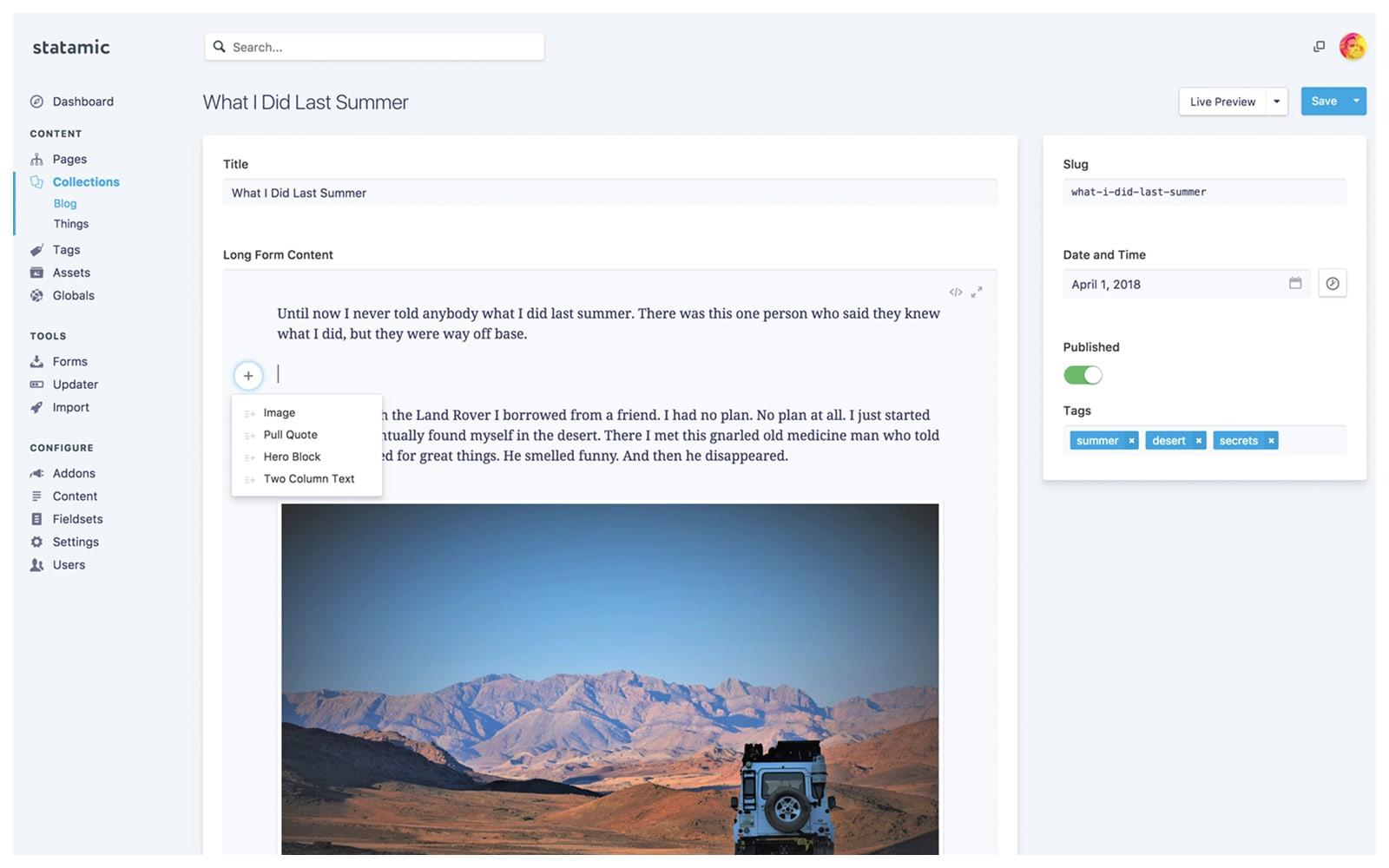Statamic’s “Bard” Is an Elegant-Looking Approach to Content Management

I did a major rebuild of Opus four years ago, and part of that process was deciding which CMS to use for the site. Up until then, Opus had been running on ExpressionEngine, but at the time, it seemed to be languishing while other CMS platforms were quickly outpacing it. (To be fair, though, ExpressionEngine’s made some significant advances in recent years.)
I ultimately rebuilt Opus on Craft but I seriously considered using Statamic, a file-based, database-less CMS. (If you’re feeling particularly nerdy, I wrote quite a bit about my CMS decision.) I’ve been very pleased with Craft but I still periodically check in on Statamic’s development because Jack McDade et al. have taken what seems like a silly idea — a modern CMS that doesn’t use a database — and spun it into a very comprehensive, well-designed, and quite slick-looking tool.
Case in point: Statamic’s “Bard” fieldtype, which was recently released back in January as part of Statamic 2.8.
Back in August 2017, I wrote a long piece urging web developers to embrace a block-oriented view of content management. My basic point was that instead of viewing a webpage’s content as a blob of code for text, images, and other content that’s managed in a single field (i.e., WordPress’ default approach), it makes much more sense to view a webpage’s content as a collection of discrete, individually edited and managed blocks.
While this approach seems pretty abstract at first, that’s actually the point. As a result, block-oriented content management “makes it much easier to create ambitious and complicated layouts that are still easy to design and manage.”
As part of that piece, I looked at what other CMS platforms were doing in this area, with WordPress’ “Gutenberg” editor being one of them. I’ve worked with Gutenberg a bit, and while it’s still obviously in beta, it has some really nice ideas (though it’s generated some controversy in WordPress circles). But even just watching the above video — I haven’t had any hands on experience with Bard yet — Bard looks quite a bit cleaner and easier to use than Gutenberg.
It’s very similar to Craft’s Matrix functionality, which is awesome and what I use to build all of Opus’ posts. However, Bard looks to go one step further than Craft by being fundamentally about text editing. With Matrix, I have to add a “Text” matrix block if I want to add some paragraphs whereas in Bard, text editing is always there with the ability to insert more advanced blocks (e.g., images, videos) in between your paragraphs.
In other words, Bard looks like what I wish Medium’s UI was: an unobtrusive text editor combined with very customizable content block functionality.
I’ve long been fascinated by the various ways that developers approach the problem of content management. And the more I see, the more I’m convinced that block-oriented content management is the best way forward. It makes the jobs of editors and content managers much easier while freeing designers and developers to build more ambitious, detailed, and flexible websites.
The question then becomes, what’s the best way to actually do such management? Statamic’s Bard is one of the most promising and elegant — and just plain coolest — methods I’ve seen to date. To be honest, I actually find Bard a little inspiring, and I’ll be interested to see if and how it drives other CMS developers to embrace similar solutions for their platforms.